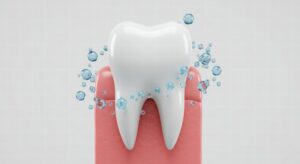
Fluoride has become a cornerstone of modern preventive dental care, but its journey from a naturally occurring mineral to a key ingredient in oral health products is both fascinating and scientifically significant. Understanding the history of fluoride helps illustrate why it remains such an essential tool in the fight against tooth decay.
Early Observations: The “Colorado Brown Stain”
The story of fluoride in dentistry began in the early 1900s in Colorado Springs, Colorado. Local dentists noticed that many patients had brown-stained teeth, which came to be known as “Colorado Brown Stain.” Interestingly, while these stains were aesthetically concerning, the affected teeth were surprisingly resistant to cavities.
Dr. Frederick McKay, a dentist practicing in the area, was among the first to investigate this phenomenon. After years of research, he linked the discoloration to high levels of naturally occurring fluoride in the local drinking water. Although it caused staining—now known as dental fluorosis—it also significantly reduced the incidence of tooth decay.
Scientific Breakthroughs in the 1930s and 1940s
Inspired by McKay’s work, researchers began studying the effects of fluoride in greater depth. One major figure was Dr. H. Trendley Dean, a dental officer for the U.S. Public Health Service. Dean’s studies confirmed that fluoride at lower concentrations—around 1 part per million (ppm)—could help prevent tooth decay without causing fluorosis in most people.
This discovery led to the first controlled experiment in water fluoridation. In 1945, Grand Rapids, Michigan, became the first city in the world to add fluoride to its municipal water supply. Over the next 15 years, the city saw a dramatic reduction—up to 60 percent—in childhood cavities.
Widespread Adoption and Product Development
The success in Grand Rapids encouraged other cities to adopt water fluoridation. By the 1950s and 1960s, fluoride was increasingly being added not only to public water supplies but also to toothpaste and mouth rinses. In 1955, Procter & Gamble introduced the first clinically proven fluoride toothpaste under the brand name Crest.
Fluoride’s benefits were further confirmed by numerous studies around the world. Organizations like the World Health Organization (WHO), the American Dental Association (ADA), and the Centers for Disease Control and Prevention (CDC) endorsed its use as a safe and effective means of reducing dental decay.
Modern Use and Controversies
Today, fluoride remains a key component in oral health care. Most municipal water supplies in the United States and many other countries include fluoride, and nearly all major brands of toothpaste contain it. Fluoride treatments are also commonly used in dental offices for patients at higher risk for cavities.
Despite its benefits, fluoride has not been without controversy. Some critics have raised concerns about overexposure, particularly in young children. As a result, public health policies now carefully regulate fluoride levels to balance cavity prevention with the risk of fluorosis.
The history of fluoride is a story of observation, research, and innovation. From mysterious brown stains in Colorado to global recognition as a vital public health tool, fluoride has revolutionized dental care. Thanks to decades of research and application, it continues to play a crucial role in helping people around the world enjoy stronger, healthier teeth.
About the Practice
Are you in need of preventive dentistry to maintain your smile? Drs. Adam and Norman Sommers at Sommers Family Dentistry would be glad to serve you! We’ll provide you with a number of services, including oral cancer screenings and thorough cleanings. Has it been 6 months or more since your last check-up? Head on over to our website to schedule your appointment or call (419) 668-3606.


